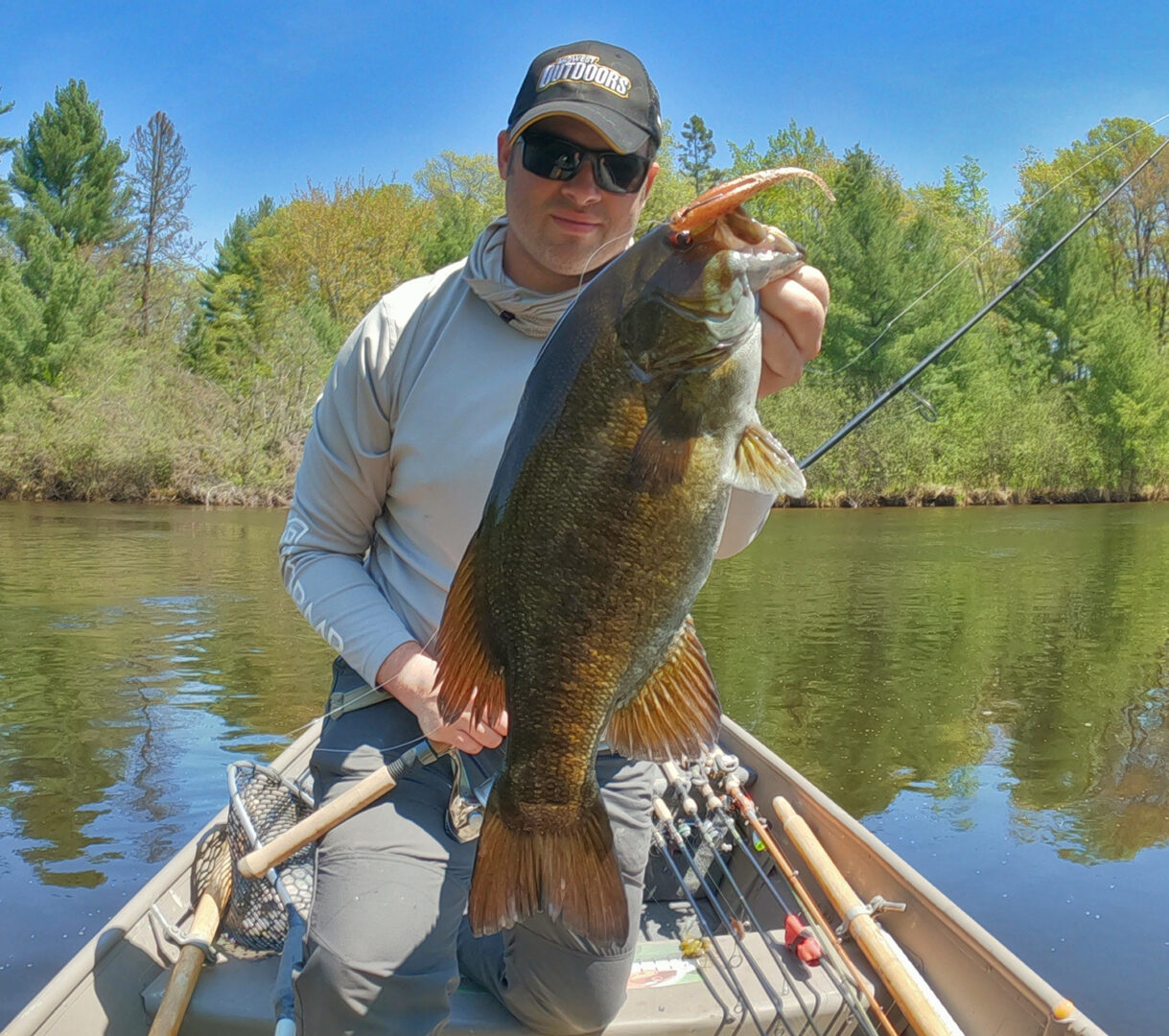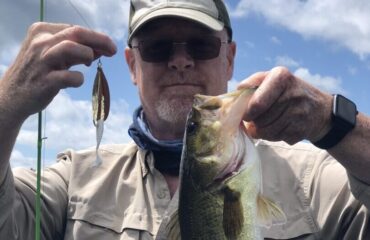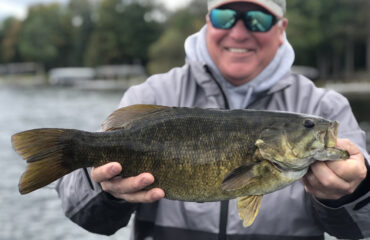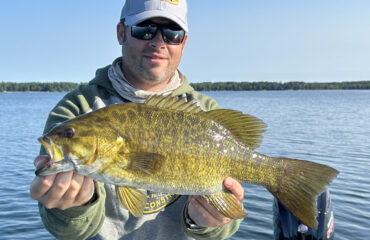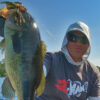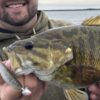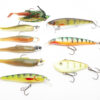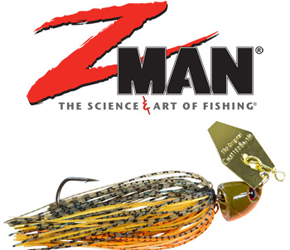River Smallmouths Close to Home
Wherever you live in the Midwest, I’m willing to bet a fortune there’s a major river system located a drive away that’s teeming with big smallmouths. If you’re willing to explore and find them, prepare yourself for some life-changing events and newfound fishing addictions.
Most river fishing first-timers are unable to comprehend the vast numbers of trophy fish some river fisheries can hold and what they’ll encounter.
During the spring (May mostly) and fall seasons (late September thru October) I’ve had brief afternoon trips in which 20 smallmouths were caught with a combined weights exceeding 100 pounds. On some days, partners and I have also caught and released more than 100 fish while floating and wading only a 1 mile stretch of water. For this to ever happen, conditions and timing have to be absolutely perfect.
While battling big fish out of larger pools, we commonly see a few other fish competing with it for the lure. If you’re fishing the right river and on the right spot at the right time, employing the right strategies, you’ll catch more big smallmouths in an hour than you might have in a full year of fishing (and for some, your entire career).
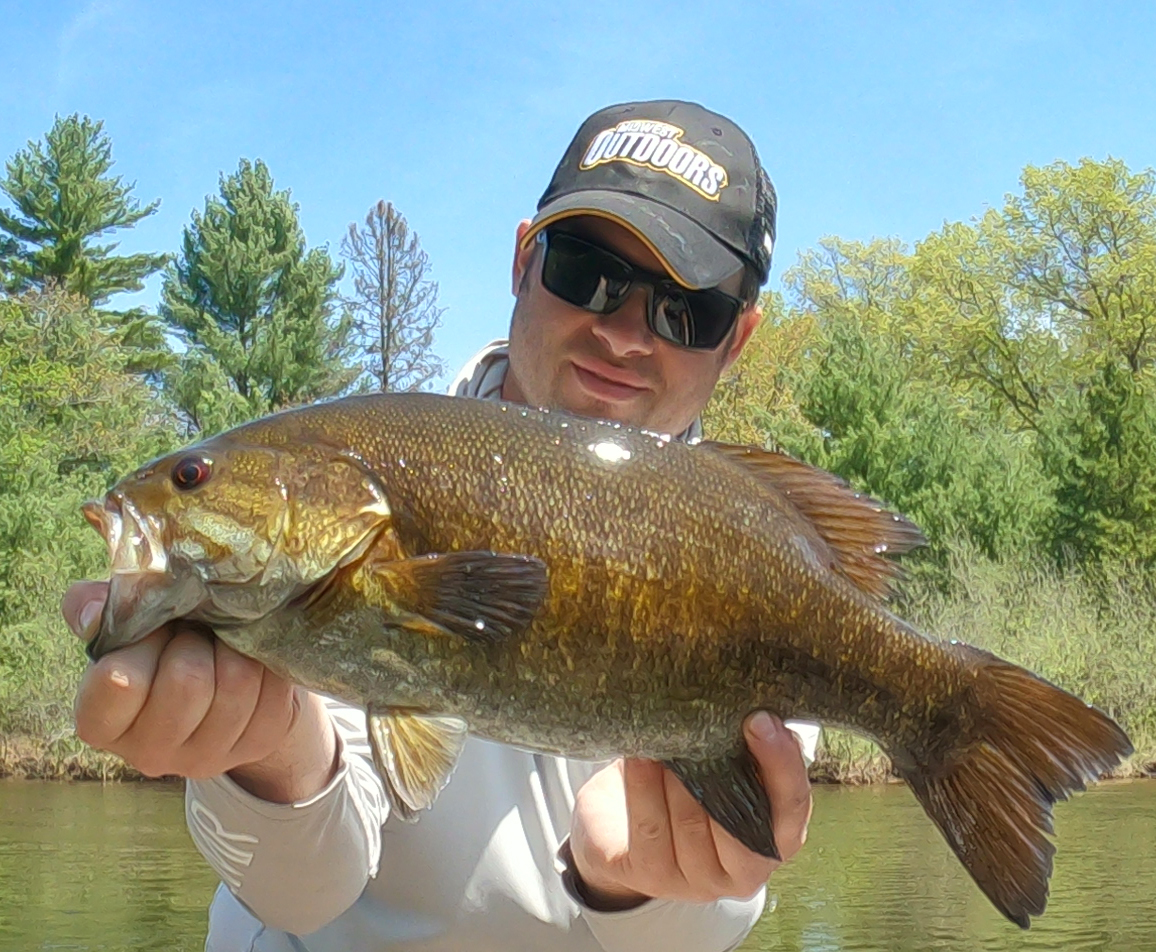
Identifying Good Rivers
Good water quality dictates the health and status of the fishery. Additional variables working together to create a river’s trophy potential also includes habitat availability and prevalence, abundance of forage, its natural undisturbed settings, protection by state management, lack of fishing pressure and exploitation, and zero harvest. Combining them all together creates a world class fishery.
To your surprise, many river systems throughout the country hold big fish potential, not only an abundance of them. They might not be home to river monsters the entire system-wide, but individual specific pools could have them.
Few serious bass anglers will ever realize the big fish potential of rivers, and the smallmouth populations they’ll hold. While all bass fisheries have a top end growth, river systems are capable of rearing more fish per capita of a high average size in comparison to lakes. Many river fishermen are caught off-guard once learning about the high fertility and faster growth rates personifying river smallmouth fisheries.
The best river smallmouth fisheries are of strong personality and complex character, defined by habitats and other physical features that could include pools, tributaries, and flowages.
Typical features and smallmouth habitats of rivers include fast runs and slow runs (troughs), channels and holes, boulders, gravel bars, riffles, weed beds, log jams, and pools. Man made areas that include wing dams, bridges, and rip-rap banks are other points of attraction as well. Smallmouth relate to it all depending on time of season and where primary food sources are located.
Fishing them is a strategy of targeting scattered and isolated pieces of structure. Not every river fishery is created equally or behaves the same. In some systems, certain types of habitat and structure will produce better than others.
River fisheries continue to be second-fiddle to lakes and boat anglers. And that’s okay. More unpressured, unexploited, big fish are available in rivers than there are in inland lakes. Most of the best river destinations are non-accessible with big, high-end boats.
One of the greatest challenges to achieving river fishing success is the fact smallmouths aren’t populated everywhere in the system. They migrate every season, and rarely hold in one place. Smallmouth bass are more migratory than anglers and fisheries biologists believe them to be.
Roughly 84,000 miles of rivers and streams flow through the state of Wisconsin, with many of these stream miles supporting migratory fish species. A high percentile of smallmouths populating them has been calculated to be migratory, non-resident fish. Without the creation of their flowages in the early to mid 1900’s, many of these rivers don’t support the same quality fisheries they possess today. Telemetry studies have proven smallmouth populations of some river systems can migrate for more than 50 miles throughout the seasons.
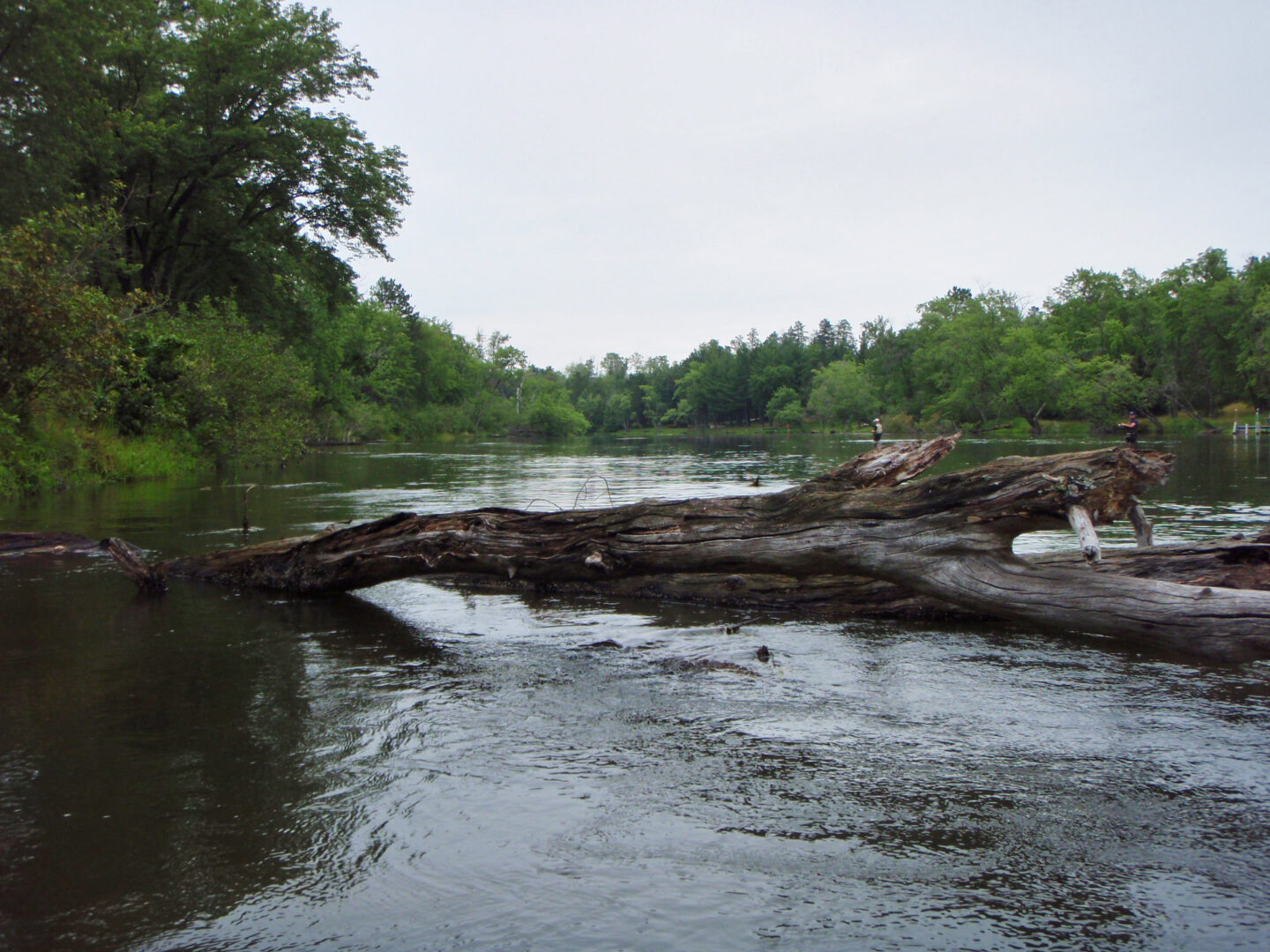
Right Time, Right Place
Being on the right river, in the right place, at the right time, and fishing with the right strategies are necessary variables for catching river monsters.
Beyond state-wide or regional catch & release seasons, many world-class river systems aren’t managed with special regulations. Rather, they are managed under a one-size-fits-all umbrella in which every pool (separated by dams) is maintained the same. This is an unfortunate reality, as some river pools produce bigger fish than others and are vastly better fisheries than others.
Because river smallmouths are so heavily concentrated and vulnerable in their migratory seasons (spring and fall), catch and release is absolutely required for them to continue producing river monsters. It’s a shame on agencies whose regulation language encourages a maximum allowable harvest of fish versus protection.
Whichever river you fish and whatever the season, and however you navigate them, I have confidence that rivers with very high trophy potential provide the best and most opportunities for trophy smallmouth. Once the addiction settles in, you’ll have difficulty fishing lakes and other inland waters again.
